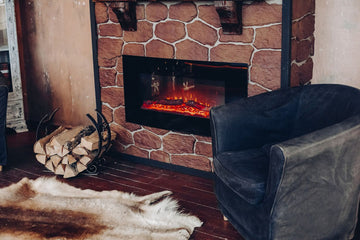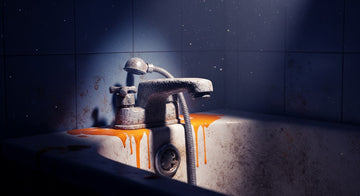In today's fast-paced world, certain aspects of house maintenance can often be overlooked. Chimney maintenance is one such area. When was the last time you gave your chimney a second glance or considered its well-being? This article aims to underscore the profound significance of professional chimney cleaning.
The Role of a Chimney in a Home
Chimneys, an iconic piece of architectural design, have stood atop houses for centuries. Originally, they held functional and symbolic importance, letting smoke from fireplaces escape while representing warmth and family. Their role remains fundamentally unchanged, ensuring that the fumes and smoke from the fireplace efficiently exit the house. This dual role of chimneys, combining historical significance and modern-day relevance, makes them indispensable parts of our homes.
Learn More About Remove Water Spots on Faucets
The Basics of Chimney Cleaning
At its core, chimney cleaning removes the soot and creosote buildup that accumulates over time. These residues, particularly creosote, are byproducts of burning wood in the fireplace. Just as a shop vacuum would suck up debris from the floor, a chimney sweep uses specialized brushes and tools to clean away this buildup, ensuring that the inside walls of the chimney flue are devoid of unwanted residue.

While it might seem easy to brush off chimney cleaning, neglecting it can lead to many issues. Common signs of a dirty chimney include:
- A smoky fireplace.
- An unusual accumulation of soot near the firebox.
- An unpleasant odor wafting from the hearth.
Health Implications of a Dirty Chimney
The smoke from a fireplace should flow up and out, but a clogged chimney can lead to smoke and fumes invading your living room. This poses significant indoor air quality and respiratory concerns. Moreover, a blocked chimney increases the risk of carbon monoxide, an odorless but deadly gas, seeping into the house.
Safety Concerns Surrounding Unclean Chimneys
Regular chimney cleaning can distinguish between a cozy night by the fire and a tragic house fire. Creosote buildup is flammable, and its presence in large amounts can lead to chimney fires. Furthermore, deterioration risks, from leaks to structural damage on the roof, can arise from neglected chimneys. An uncared-for chimney can become a liability, with damages affecting the fireplace and adjacent parts of the house.
The Economic Implications
Professional chimney cleaning may seem like an added expense, but the preventative savings are tangible. Homeowners mitigate potential repair costs from chimney fires or structural damage by maintaining a clean chimney. Plus, a clean chimney enhances energy efficiency, ensuring the fireplace heats up the room optimally, reducing heating bills.
The Aesthetic and Functional Benefits
Beyond safety and economy, a clean chimney ensures your fireplace remains a beautiful centerpiece in your living area. Regular cleaning also enhances the efficiency of smoke and fume extraction, providing a pleasant experience every time you light up the fireplace.

Tools and Techniques Used by Professionals
Professional chimney sweeps come armed with various tools, from brushes of different sizes to flashlights illuminating every nook and cranny inside the chimney. The cleaning process is meticulous, starting from the bottom of the firebox, moving up through the damper smoke shelf, and extending to the very top of the chimney.
Why DIY Isn't Always the Best Approach?
While the internet is replete with DIY tips and information on chimney cleaning, the job is best left to the pros. There's a substantial risk involved, especially when dealing with creosote buildup or scaling the heights of roofs. Moreover, a professional chimney sweep brings experience and expertise, ensuring a thorough and safe cleaning process.
Frequency of Professional Chimney Cleaning
While there's no one-size-fits-all answer, factors determining cleaning schedules include:
- The type of wood burnt.
- The frequency of fireplace use.
- The specific condition of your chimney.
However, it's wise to get an annual inspection, at the least, and heed signs indicating it's time for a comprehensive sweep.
Additional Services Offered by Chimney Professionals
Beyond mere cleaning, chimney professionals offer inspections, especially crucial when selling homes or following natural disasters. They also deal with repairs, installations, and even upgrades. From fixing cracks in the walls to installing a new chimney cap, these experts ensure every section of your chimney is in top condition.
Selecting the Right Chimney Cleaning Service
It's vital to choose a chimney cleaning company with the right credentials. Look for logos or certifications from reputable organizations. Equally important is to be wary of red flags like exceptionally low prices or lack of transparency about their materials and methods.
The Environmental Impact of Chimney Maintenance
Regular chimney cleaning leads to a greener environment. A clean chimney ensures optimal burning, reducing wood consumption. Plus, with less soot and creosote, there's a decrease in the harmful fumes released into the atmosphere.

Dispelling Common Chimney Myths
Many misconceptions float around chimney maintenance. One such myth is the need to clean only after a set number of fires. In reality, the type of wood and the fireplace's efficiency determine cleaning frequency. Another misconception is that all woods result in a clean burn. However, certain woods, when burnt, lead to greater creosote buildup.
Conclusion
Professional chimney cleaning isn't just an optional house chore—it's essential. From ensuring safety and health to providing economic and environmental benefits, a well-maintained chimney ensures peace of mind for every homeowner. As you sit by your fireplace, warming up to its comforting glow, remember that its efficiency and safety are largely due to the professionals who keep it clean and functioning at its best.
Frequently Asked Questions
Is there a peak season for chimney cleaning services?
Yes, early fall is often a peak season as homeowners prepare for winter. Booking outside this timeframe might offer more flexible scheduling.
Are there any signs that a chimney needs urgent cleaning or attention?
A strong, unpleasant odor, a drafty fireplace, or visible soot in the hearth indicate urgent cleaning is necessary.
Can any other fuels cause creosote buildup besides wood?
Burning materials like coal can also produce creosote, though wood remains the primary contributor.





